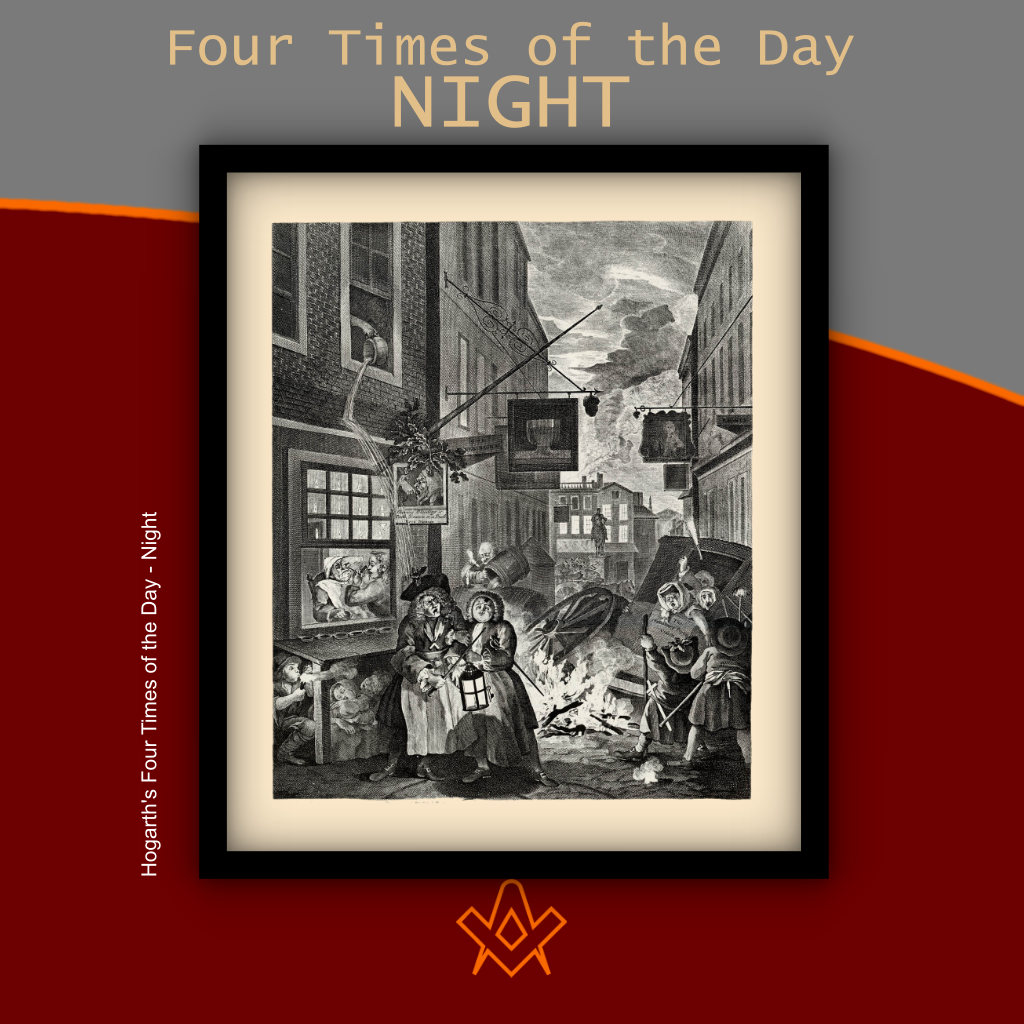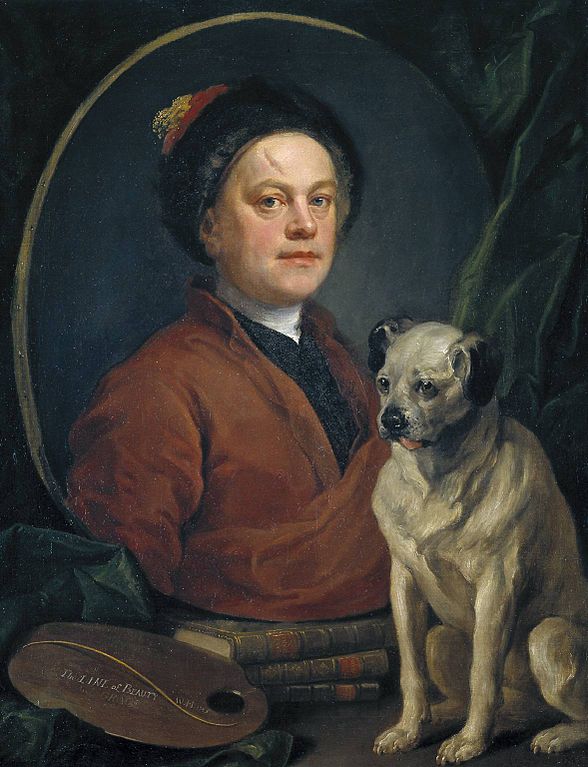Four Times of the Day is a series of four oil paintings by English artist William Hogarth. They were completed in 1736, and in 1738 reproduced and published as a series of four engravings.
They are humorous depictions of life in the streets of London, the vagaries of fashion, and the interactions between the rich and poor.
The Painter and His Pug by William Hogarth (1745)
IMAGE LINKED: wikimedia
William Hogarth FRSA was an English painter, printmaker, pictorial satirist, social critic, responsible for the introduction of copyright act of parliament and he was also a Freemason.
His work ranges from realistic portraiture to comic strip-like series of pictures called ‘modern moral subjects’, and he is perhaps best known for his series A Harlot’s Progress, A Rake’s Progress and Marriage A-la-Mode.
Knowledge of his work is so pervasive that satirical political illustrations in this style are often referred to as ‘Hogarthian’.
Hogarth was born in London (10 November 1697 – died 26 October 1764). In his youth he took up an apprenticeship with an engraver, but did not complete the apprenticeship.
Influenced by French and Italian painting and engraving, Hogarth’s works are mostly satirical caricatures, sometimes bawdily sexual, mostly of the first rank of realistic portraiture.
They became widely popular and mass-produced via Etchings in his lifetime, and he was by far the most significant English artist of his generation. Charles Lamb deemed Hogarth’s images to be books, filled with ‘the teeming, fruitful, suggestive meaning of words. Other pictures we look at; his pictures we read’.
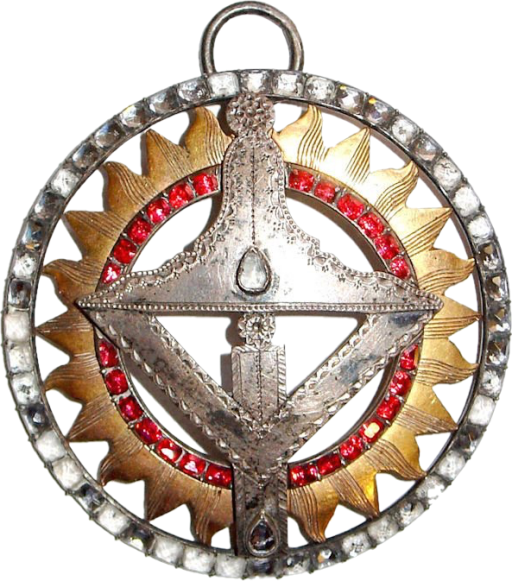
Hogarth Jewel
IMAGE CREDIT: wikimedia
Hogarth Jewel – Designed by William Hogarth, appointed a Grand Steward in 1734 for the 17 April 1735 Feast at Mercer’s Hall, and worn by all Grand Stewards—and many Past Grand Stewards—until 1835 following the change of jewel to a compasses and cornucopia.
Freemasonry
Hogarth was initiated sometime between 1725-1728 into the Lodge at the Hand and Apple Tree Tavern No. 41, but due to his passion for Freemasonry, he went on to join many other lodges in his life.
Hogarth designed a jewel to be worn by Grand Stewards, with their own jewel of office to be suspended from a crimson ribbon and their aprons lined and edged in the same colour.
He would have been one of the first brothers to be ‘raised’ as the Third Degree of Craft Freemasonry was introduced in 1725.
A Harlot’s Progress
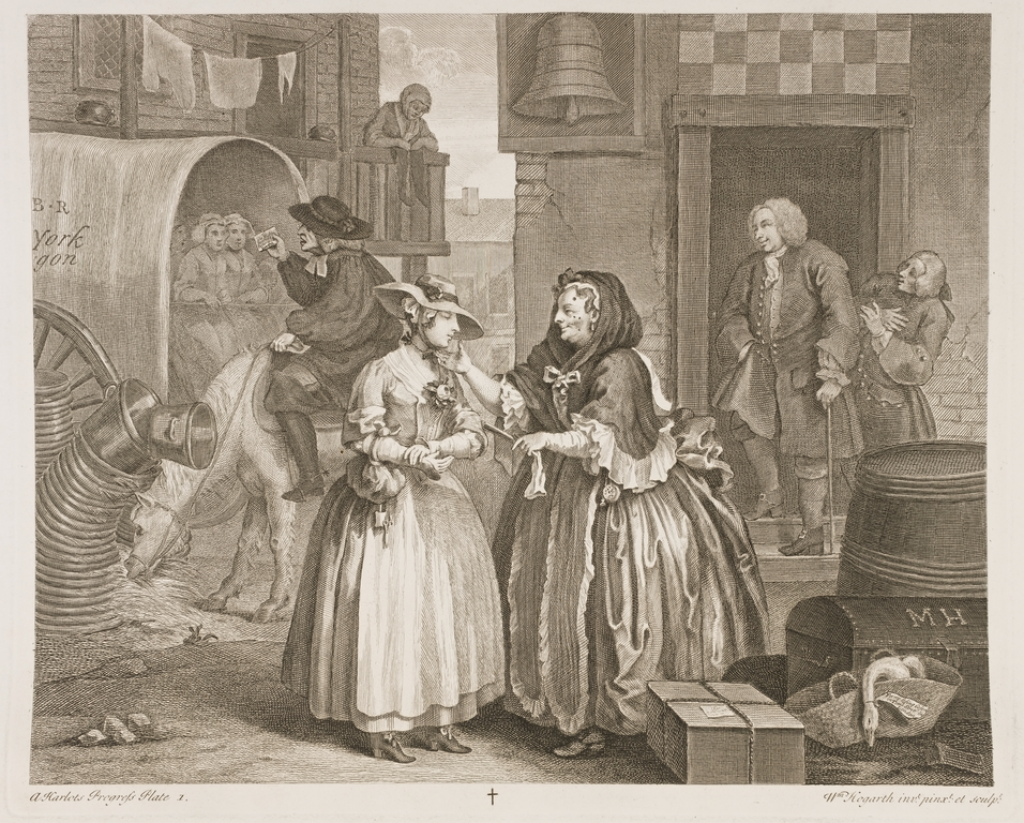
plate 1
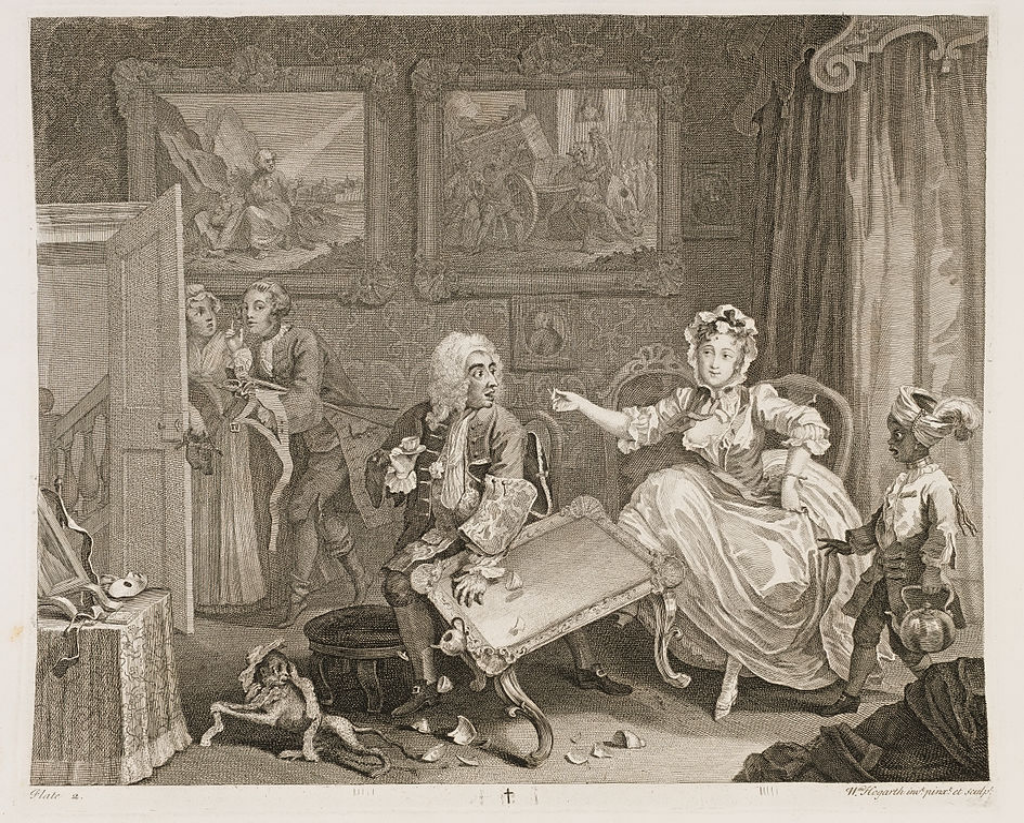
plate 2
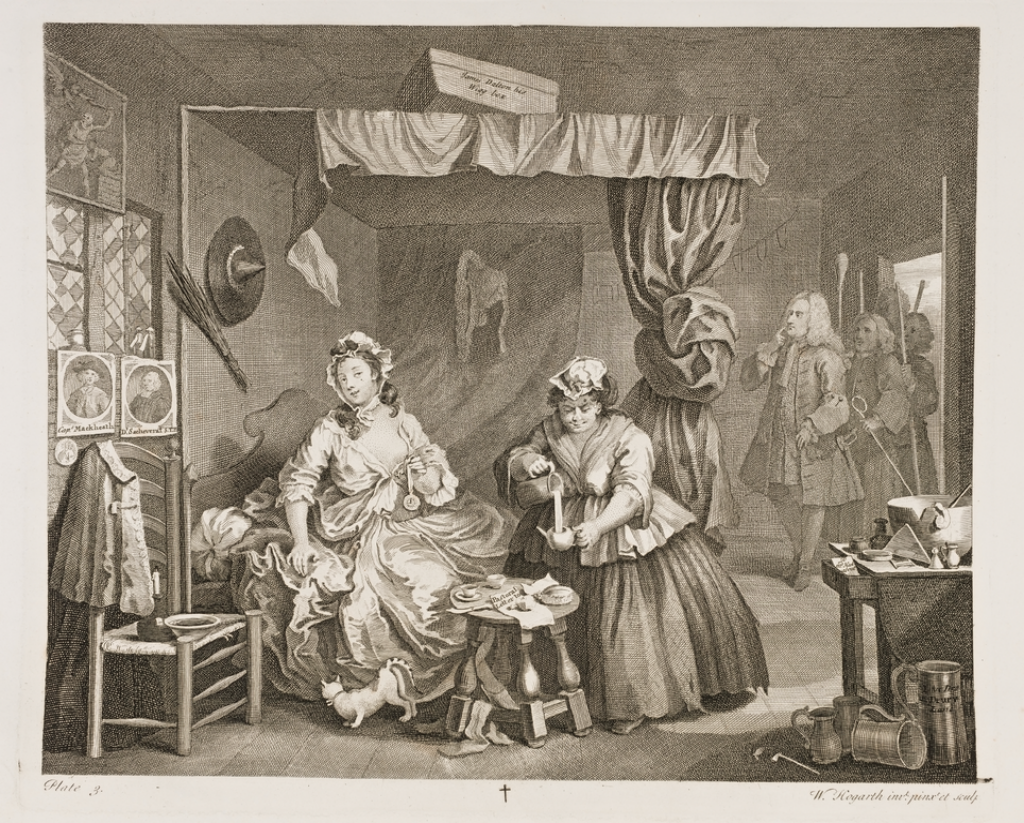
plate 3
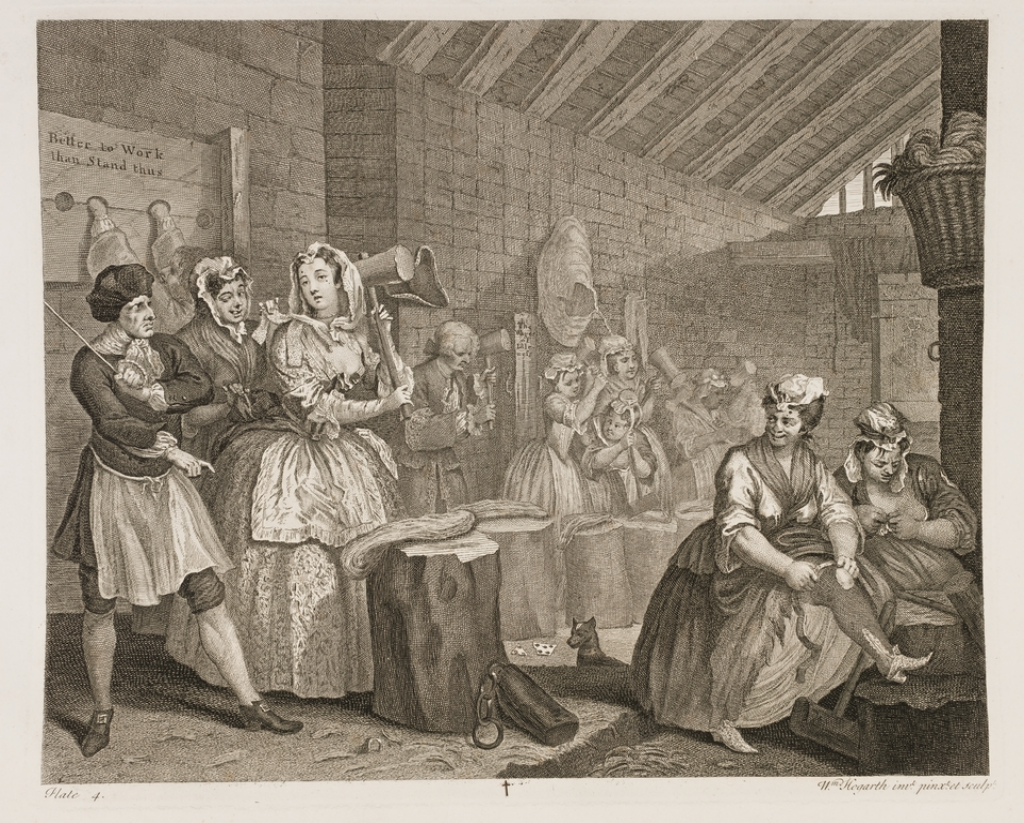
plate 4
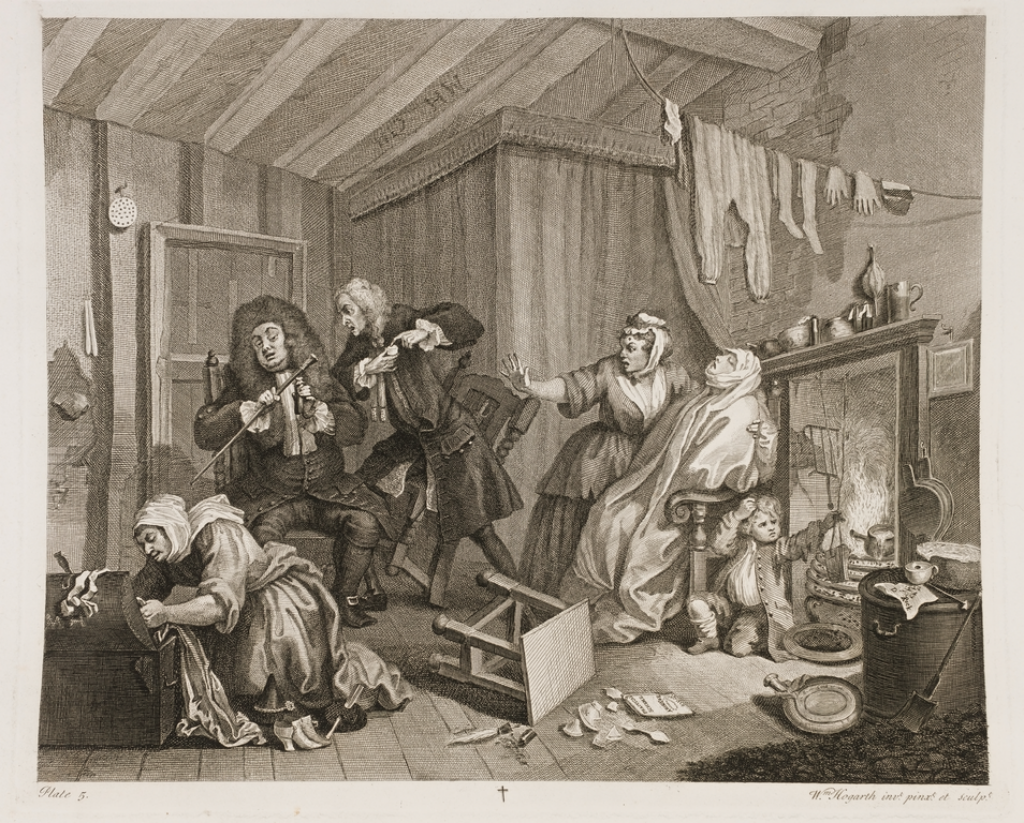
plate 5
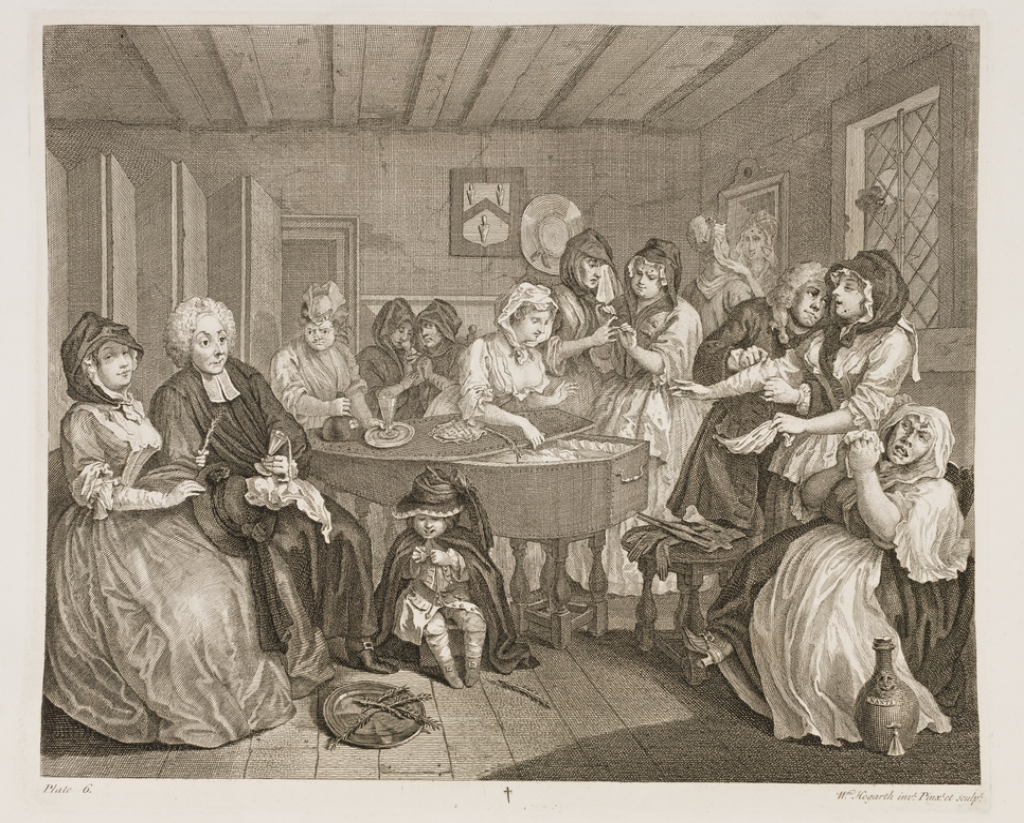
plate 6
In 1731, Hogarth completed the earliest of his series of moral works, a body of work that led to significant recognition. The collection of six scenes was entitled ‘A Harlot’s Progress’ and appeared first as paintings before being published as engravings.
A Harlot’s Progress depicts the fate of a country girl who begins prostituting – the six scenes are chronological, starting with a meeting with a bawd and ending with a funeral ceremony that follows the character’s death from venereal disease.
However, Hogarth ‘exposed’ many of the secret signs of Freemasonry within this series but concealed them so masterfully.
The inaugural series was an immediate success and was followed in 1733–1735 by the sequel A Rake’s Progress. The second instalment consisted of eight pictures that depicted the reckless life of Tom Rakewell, the son of a rich merchant, who spends all of his money on luxurious living, services from prostitutes, and gambling – the character’s life ultimately ends in Bethlem Royal Hospital.
The original paintings of A Harlot’s Progress were destroyed in the fire at Fonthill House in 1755; the oil paintings of A Rake’s Progress (1733–34) are displayed in the gallery room at Sir John Soane’s Museum, London, England.
Copyright Act
When the success of A Harlot’s Progress and A Rake’s Progress resulted in numerous pirated reproductions by unscrupulous print sellers, Hogarth lobbied in parliament for greater legal control over the reproduction of his and other artists’ work.
The result was the Engravers’ Copyright Act also known as ‘Hogarth’s Act‘, which became law on 25 June 1735 and was the first copyright law to deal with visual works as well as the first to recognize the authorial rights of an individual artist.
Marriage A-la-Mode
In 1743–1745, Hogarth painted the six pictures of Marriage A-la-Mode (National Gallery, London), a pointed skewering of upper-class 18th-century society. This moralistic warning shows the miserable tragedy of an ill-considered marriage for money. This is regarded by many as his finest project and may be among his best-planned story serials.
Marital ethics were the topic of much debate in 18th-century Britain. The many marriages of convenience and their attendant unhappiness came in for particular criticism, with a variety of authors taking the view that love was a much sounder basis for marriage.
Hogarth here painted a satire – a genre that by definition has a moral point to convey – of a conventional marriage within the English upper class. All the paintings were engraved and the series achieved wide circulation in print form.
The series, which is set in a Classical interior, shows the story of the fashionable marriage of Viscount Squanderfield, the son of bankrupt Earl Squander, to the daughter of a wealthy but miserly city merchant, starting with the signing of a marriage contract at the Earl’s mansion and ending with the murder of the son by his wife’s lover and the suicide of the daughter after her lover is hanged at Tyburn for murdering her husband.
Hogarth’s House in london england
IMAGE LINKED: wikimedia
Hogarth’s House in Chiswick, west London, is now a museum; the major road junction next to it is named the Hogarth Roundabout. In 2014 both Hogarth’s House and the Foundling Museum held special exhibitions to mark the 250th anniversary of his death.
In 2019, Sir John Soane’s Museum, which owns both The Rake’s Progress and The Humours of an Election, held an exhibition which assembled all Hogarth’s series of paintings, and his series of engravings, in one place for the first time.
Four Times of the Day – Night
Four Times of the Day, series of four oil paintings by William Hogarth.
IMAGE LINKED: wikimedia
equestrian statue of Charles I of England by Hubert Le Sueur
IMAGE LINKED: wikimedia
The final picture in the series, Night, shows disorderly activities under cover of night in the Charing Cross Road, identified by Hubert Le Sueur‘s equestrian statue of Charles I of England and the two pubs this part of the road is now known as Whitehall.
In the background the passing cartload of furniture suggests tenants escaping from their landlord in a ‘moonlight flit’. In the painting the moon is full, but in the print it appears as a crescent.
Traditional scholarship has held that the night is 29 May, Oak Apple Day, a public holiday which celebrated the Restoration of the monarchy (demonstrated by the oak boughs above the barber’s sign and on some of the subjects’ hats, which recall the royal oak tree in which Charles II hid after losing the Battle of Worcester in 1651).
Alternatively, Sean Shesgreen has suggested that the date is 3 September, commemorating the battle of Worcester itself, a dating that preserves the seasonal progression from winter to spring to summer to autumn.
Charing Cross was a central staging post for coaches, but the congested narrow road was a frequent scene of accidents; here, a bonfire has caused the Salisbury Flying Coach to overturn. Festive bonfires were usual but risky: a house fire lights the sky in the distance. A link-boy blows on the flame of his torch, street-urchins are playing with the fire, and one of their fireworks is falling in at the coach window.
Franz Anton Maulbertsch: Der Quacksalber (The quack), before 1785 Oil on wood, 53 x 56 cm Gallery: Städtische Kunstsammlungen Augsburg
IMAGE LINKED: wikimedia
On one side of the road is a Barber Surgeon whose sign advertises Shaving, bleeding, and teeth drawn with a touch. Ecce signum! Inside the shop, the barber, who may be drunk, haphazardly shaves a customer, holding his nose like that of a pig, while spots of blood darken the cloth under his chin.
The surgeons and barbers had been a single profession since 1540 and would not finally separate until 1745, when the surgeons broke away to form the Company of Surgeons. Bowls on the windowsill contain blood from the day’s patients.
Underneath the windowshelf, a homeless family have made a bed for themselves: vagrancy was a criminal offence.
In the foreground, a drunken Freemason, identified by his apron and set square medallion as the Worshipful Master of a lodge, is being helped home by his Tyler, as the contents of a chamber pot are emptied onto his head from a window.
In some states of the print, a woman standing back from the window looks down on him, suggesting that his soaking is not accidental !
Sir Thomas de Veil
IMAGE LINKED: wikimedia
The freemason is traditionally identified as Sir Thomas de Veil, who was a member of Hogarth’s first Lodge, Henry Fielding‘s predecessor as the Bow Street magistrate, and the model for Fielding’s character Justice Squeezum in the play Rape upon Rape also known as The Justice Caught in His Own Trap and The Coffee-House Politician (1730).
Sir Thomas de Veil was unpopular for his stiff sentencing of gin-sellers, which was deemed to be hypocritical as de Veil was known to be an enthusiastic drinker. In the painting he is supported by his Tyler, a servant equipped with sword and candle-snuffer, who may be Brother Montgomerie, the Grand Tyler.
All around are pubs and brothels. The Earl of Cardigan tavern is on one side of the street, and opposite is the Rummer, whose sign shows a rummer (a short wide-brimmed glass) with a bunch of grapes on the pole.
Masonic lodges met in both taverns during the 1730s, and the Lodge at the Rummer and Grapes in nearby Channel Row was the smartest of the four founders of the Premier Grand Lodge.
Matthew Prior by Thomas Hudson
IMAGE LINKED: wikimedia
The publican is adulterating a hogshead of wine, a practice recalled in the poetry of Matthew Prior who lived with his uncle Samuel Prior, the Landlord successively of both the Rummer and Grapes and The Rummer.
My uncle, rest his soul, when living,
Might have contriv’d me ways of thriving;
Taught me with cider to replenish
My vats, or ebbing tide of Rhenish.
On either side of the street are signs for The Bagnio and The New Bagnio. Ostensibly a Turkish bath, ‘bagnio’ had come to mean a disorderly house.
George Montagu: 1st_Duke of Montagu
IMAGE LINKED: wikimedia
The 6th Earl of Salisbury scandalised society by driving and upsetting a stagecoach. John Ireland suggests that the overturned ‘Salisbury Flying Coach’ below the ‘Earl of Cardigan’ sign was a gentle mockery of the Grand Master 4th Earl of Cardigan, George Brudenell, later Duke of Montagu, who was also renowned for his reckless carriage driving and it also mirrors the ending of Gay’s Trivia in which the coach is overturned and wrecked at night.
Further Resources:
Low quality images of all four prints can be down loaded here: cle.ens-lyon
Full size engravings do appear from time to time at auction houses. The estimate is usually £1000+ / €1,000+ / $1,300+ for good quality engravings; price is dependent on quality and date of edition.
Artist: William Hogarth (1697-1764)
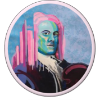
William Hogarth was made a Mason at the Hand and Apple Tree Lodge in Little Queen Street, Holborn, London c1725-28.
He later joined the Bear and Harrow in Butcher Row, known later as the ‘Corner Stone’ Lodge 4, and then Grand Steward’s Lodge. He designed a jewel known as ‘Hogarth’s Jewel’, it remained in continual use into the nineteenth century.
Hogarth was a prolific English painter whose scenes often demonstrated a satirical depiction of 18th century life.
He was responsible for the Copyright Act passed by Parliament in 1735 also known as the Hogarth Act.
Artwork: Tim Fowler

Engravings by Hogarth
By: William Hogarth (Author) Sean Shesgreen (Editor)
This book contains 101 of Hogarth’s finest and most important engravings, including all the major series or “progresses”: “The South Sea Scheme,” A Harlot’s Progress, “A Midnight Modern Conversation,” A Rake’s Progress, Before and After, Marriage à la Mode, Industry and Idleness, “The March to Finchley,” The Four Stages of Cruelty, “Time Smoking a Picture,” “Tailpiece,” and many more, including ten study sketches and paintings that show how the final works evolved.
Sean Shesgreen, a foremost authority on Hogarth, has consistently selected the best states of the plates to be used in this edition and has carefully introduced them, commenting upon the artist’s milieu and the importance of plot, character, time, setting, and other dimensions.
A most important aspect of this book, found in no other Hogarth edition, is the positioning of the editor’s commentary on each plate on a facing page.
With the incredible and sometimes overwhelming amount of detail and action going on in these engravings, this is a most helpful feature.
Recent Articles: masonic history
 Protestantism and Masonic Influence in Brazil Discover the untold story of how Freemasons helped Southern Americans immigrate to Brazil post-Civil War, fostering economic and educational growth in Santa Bárbara d’Oeste and Americana. Learn about their pivotal role in establishing Protestant churches and ensuring the secularity of the Brazilian State amidst a Catholic-dominated society. |
 Explore the proper use of the sacred word in Brazilian Freemasonry through an analysis of Masonic literature and Bible translations. Uncover the errors in pronunciation and the need for corrections to maintain liturgical coherence in rituals. Discover insights on Masonry, rituals, and the Hebrew word Boaz. |
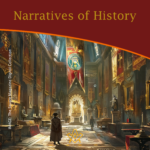 Narratives of History |
 A Very Royal Sesquicentenary |
 Unveiling the Enigma: Discover the Royal Society's Legacy and its Impact on Science. Delve into the fascinating history of the Royal Society, the prestigious UK academy shaping scientific progress since 1660. Explore its pivotal role in advancing knowledge, fostering collaboration, and unlocking the secrets of the universe. Prepare to be amazed! |
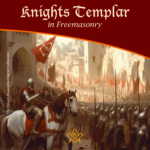 Knights Templar in Freemasonry Uncover the Mysteries of the Knights Templar in Freemasonry! Delve into the intriguing world where chivalry and symbolism intertwine. Discover the captivating rituals and ancient secrets behind the Knights Templar Masonic Orders. Explore the historical connection and delve into the enigmatic narratives that continue to fascinate enthusiasts today. Unveil the hidden truths now! |
 The Royal Arch stands as the rainbow of promise in the Ritual; it stands as the promise of the resurrection; of that which was lost and that it shall be recovered. The question arises as to whether the Master's Word was originally communicated in the Third Degree? On this point there is some diversity of opinion. Originally published in 1915, this insight into the Fourth Degree – the Holy Royal Arch – is as relevant today as it was over 100 years ago. |
 Unveiling the Mysteries of Druidism: Discover the Intriguing Connection with Freemasonry. Explore the ancient spiritual practice of Druidism and its fascinating ties to the enigmatic world of Freemasonry. Delve into the shared symbolism and rituals that have captivated minds for centuries. Unlock the secrets of these intertwined traditions today! |
 Uncover the legacy of freestone masons and their pivotal role in crafting medieval cathedrals. Discover the artistry behind their techniques, the hierarchy within their craft, and the enduring impact of their intricate carvings. A deep dive into the world of these master craftsmen awaits you! |
 Unearth the intriguing journey from Vincha Culture to Freemasonry. Discover how ancient building methods intertwine with modern Masonic philosophies. This exploration will shed light on the fascinating link between the Serbian term "shestarenye" and the symbolic significance of the compass in Freemasonry. |
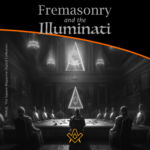 Freemasonry and the Illuminati Unravel the enigmatic world of Freemasonry and the Illuminati in our latest exposé. Dive into centuries-old mysteries, debunk conspiracy theories, and discover the truth behind these elusive societies. Are they puppet masters or mere myths? Join us as we dissect history and fact from fiction. |
 The Île des Templiers, or “Island of the Templars” lies within a leafy park in Paris. The execution site of Jacques du Molay, the last Grand Master of the Knights’ Templar bears a plaque with the epitaph ‘A cet endroit / Jacques de Molay / Dernier grand maître / de l'ordre du temple / a été brûlé le 18 Mars 1314’ (‘In this location / Jacques de Molay / Last grand master / of the order of the temple / was burned on 18 March 1314’) |
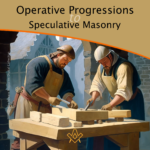 Operative Progressions to Speculative Masonry Both Operative and Speculative Masonry are an important part of the modern fraternity of Freemasonry, which combines elements of both traditions. Today, Freemasonry is a fraternity that is open to men of good character, who are interested in personal development and in making a positive contribution to their communities. |
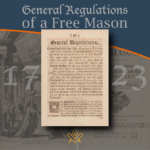 General Regulations of a Free Mason, 1723 General Regulations of a Free Mason as contained in Anderson's Constitutions of the Freemasons, published 1723. the Regulations are of great historical interest. Compiled by George Payne, the second Grand Master of the Premier Grand Lodge of England, they were printed in 1722/3, thus published just over five years after the formation of the Grand Lodge 1717. |
 The Genesis of the 1723 Book of Constitutions 2023, marks the three hundredth anniversary of the publication of the first printed Book of Constitutions of the Grand Lodge formally established in London two years previously. This is an anniversary whose significance extends beyond freemasonry. A paper by Andrew Prescott |
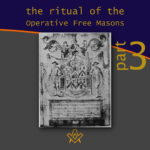 The Ritual of the Operative Free Masons - P3 Existing Operative Free Masons. The ritual I am about to refer, is that of "The Worshipful Society of Free Masons, Rough Masons, Wallers, Slaters, Paviors, Plaisterers, and Bricklayers." By Thomas Carr, M.D., P. M. Honorary Member of the Guild of Operative Free Masons |
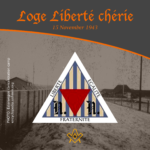 Liberté chérie was a Masonic Lodge founded in 1943 by Belgian Resistance fighters and other political prisoners at Esterwegen concentration camp. It was one of the few lodges of Freemasons founded within a Nazi concentration camp during the Second World War. |
 The Ritual of the Operative Free Masons - P2 If anyone doubts the fact that the formation of Speculative Free Masonry was due to and based upon Operative Free Masonry, it is quite easy to convince him of his error if he will only study the first Book of Constitutions. By Thomas Carr, M.D., P. M. Honorary Member of the Guild of Operative Free Masons |
 In 1881, Freemasonry rose from the ashes of a fire in the mining town of Kokomo, Summit County, Colorado. Corinthian Lodge No. 42, along with Kokomo, no longer exists but it holds the record of having been – at an elevation of 10,618 feet – the highest Masonic Lodge in the USA. |
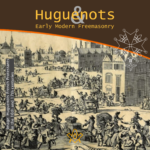 The Huguenots and Early Modern Freemasonry The Huguenots influence in the development of early modern Freemasonry at the time of the formation of the Grand Lodge in London around 1717 / 1723. |
 November is a month of reflection – perhaps due to the fact that we are getting close to the years' end – but also because Remembrance / Armistice Day (11 November) is a significant date in most countries' diaries. |
 Speculative Freemasonry, as practise by Grand Lodge of England, was officially born just over three hundred years ago, is today an international organisation, counting over six million members. It has been subjected to persecution, suppression, and abolition throughout its history. In its infancy, only a couple of decades after its official birth, it had already become a target. |
 The Ritual of the Operative Free Masons - P1 The original paper was written, first, to prove that Speculative Free Masonry was derived from Operative Free Masonry; second, to give some account of the Operative Free Masons, of their Ritual, and of their customs. By Thomas Carr, M.D., P. M. Honorary Member of the Guild of Operative Free Masons |
 American Fraternalism in the 19th and Early 20th Centuries The late 19th and early 20th centuries in the United States has been called the "Golden Age of Fraternalism." How did this come about and why was the idea of joining a fraternal organization so popular? We will explore this question and examine the regalia used by many fraternal organizations in this period. |
 Societas Draconistarum, meaning "Society of the Dragonists"– was a chivalric Order for selected nobility, founded in 1408 by Sigismund von Luxembourg, who through marriage became the King of Hungary (1387–1437) and later Holy Roman Emperor. The Order was fashioned after the military orders of the Crusades, requiring its initiates to defend the cross and fight the enemies of Christianity, in particular the Ottoman Empire. |
 The Perjured Free Mason Detected Was Samuel Prichard a perjured individual, or simply a misguided Freemason? Prichard's book "Free Masonry Dissected" published in 1730, is now used by many Masonic historians as a source of reference with regards to the introduction of the third degree into the Craft. But at the time it was published in 1730, it was not so well received by members of the Grand Lodge of England. |
 17th century and the Holy Royal Arch This article focuses on a period of transition between a point in time when we can safely and historically identify the first formation of what could be called as the ‘Royal Arch’ and the historical events that have preceded it. |
 Most Freemasons have heard the terms 'Operative' and 'Speculative' Masons, and this article helps to understand the difference: |
 Roberts' Constitutions of Freemasonry 1722 Published a year before Anderson's Constitutions, The Old Constitutions Belonging to the Ancient and Honourable SOCIETY OF Free and Accepted MASONS. Originally printed in London England; Sold by J. Roberts, in Warwick-Lane, MDCCXXII.(1722) |
 From 'Songs of religion and life', 1876 by John Stuart Blackie (1809-1895) |
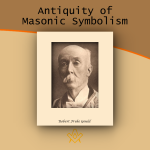 On the Antiquity of Masonic Symbolism Is the Symbolism of Masonry an inheritance derived from the old Masons who flourished before the era of the Grand Lodges (1717); or has it been borrowed from the Rosicrucians or others, after 1717? |
 Mason's Marks – from Egypt to Europe? Mason's marks have been a source of intrigue, not only to Freemasons but to historians and archaeologists. The use of simple pictograms have been employed for millennia by artisans to identify their work. But where did they originate and why? |
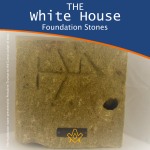 The White House Foundation Stones Further to the articles in our series on the history of the stone masons, we have a rather intriguing addition. During the 1950's renovation of the White House, President Truman retrieved more than 100 stone blocks with stonemasons marks. |
 What the Goose and Gridiron Tavern is in the ancient annals of London Freemasonry, The Green Dragon Tavern is to the memories of the Free-mason, of Boston and New England. |
 Auschwitz concentration camp: video photo article taken in 2013 |
 There are two things of importance happening this day - 27 January |
 Two approaches regarding the understanding of Freemasonry |
 Masonic Research in England c1930 An article which appeared in an American Masonic magazine, c1930 and which was reproduced in England, provoking a little controversy. |
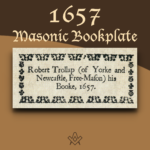 Masonic bookplates the ‘Brethren’s spiritual coats of arms and marks’ |
 The Unlawful Societies Act of 1799 Rebellious Freemasons and the 21st century |
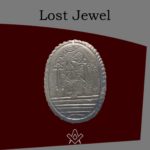 In 1912, Sarah Dowd of Dromore, Ireland, found a Masonic jewel dated 1517 - a date two hundred years before the establishment of Grand Lodge... |
 Freemasonry and Fascist Regime Interesting speech by the famous historian Prof. Aldo A. Mola, who links the fascist regime with the Masonic Associations. |
 Was famous Russian poet Alexander Pushkin a Freemason? And if so, was he a member of the lodge ‘for which all the lodges in Russia were destroyed’? |
 The Importance of Masonic Research Why is accurate - or authentic - Masonic research so important? The importance of making a daily advancement in Masonic knowledge is something that The Square is passionate about promoting. |
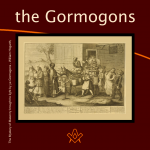 The Antient Noble Order of the Gormogons had a brief existence in the eighteenth century; they left few records or accomplishments, |
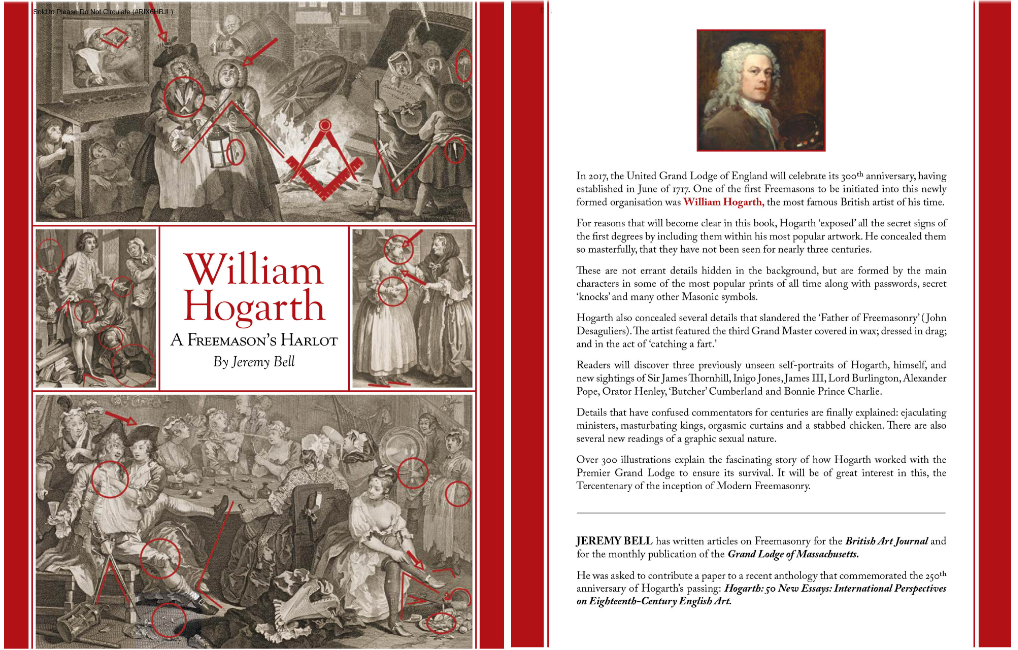
Many more details from the other scenes are explained in my book William Hogarth - A Freemason’s Harlot which is available from my website www.brotherhogarth.com.
Email me at Brotherhogarth@gmail.com. I can show you how many of Hogarth’s other works were Masonically themed.
Recent Articles: by Brother Hogarth
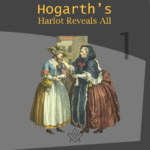 Hogarth’s Harlot Reveals All - Part 1 A new series looking at the hidden Masonic symbolism within Brother Hogarth's works - what can you find? |
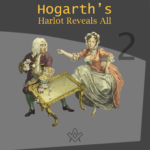 Hogarth’s Harlot Reveals All - Part 2 The second instalment in the series looking at the hidden Masonic symbolism within Brother Hogarth's works - what can you find? |
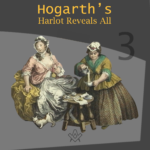 Hogarth’s Harlot Reveals All - Part 3 Brother Hogarth gives us another bawdy glimpse into the salacious world of the 'Harlot's Progress', and the tantalising Masonic symbolism hidden within! Can you spot the clues? |
 Hogarth’s Harlot Reveals All - Part 4 This month we find her in prison doing forced labour. So why, you may ask, is she dressed so finely? This sudden change of costume confused many commentators over the centuries. |
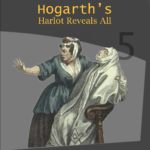 Hogarth’s Harlot Reveals All - Part 5 In last month’s instalment, our Harlot is found in prison doing forced labour. In this instalment the Harlot dies! |
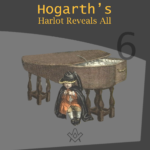 Hogarth’s Harlot Reveals All - Part 6 With our protagonist (the Harlot) lying in her casket, what next for the Widow's Son? |
 Hogarth's Harlot Reveals All - Part 6.2 A naughty clergyman, the virgin, and 'Father Time' - what can Hogarth reveal now?! |
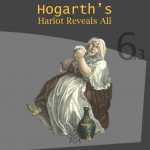 Hogarth's Harlot Reveals All - Part 6.3 Who are the famous men featured in the scene? Hogarth reveals all! |
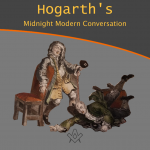 Hogarth's Midnight Modern Conversation Brother Hogarth is back with a look at another work of art with Masonic symbolism 'hidden in plain view' - what is occurring within the Midnight Modern Conversation? |
 Hogarth discreetly embeds more masonic signs and symbols in his paintings , never forgetting, everything he included in his scenes had meaning and is there for a reason. |
 Hogarth discreetly embeds more masonic signs and symbols in A Rake’s Progress, never forgetting, everything he included in his scenes had meaning and is there for a reason. |
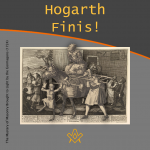 For twelve months Hogarth and his Harlot have revealed all, and the Rake has exposed himself. In this, the last part of the series (for now), we get a final glimpse at a few more of Hogarth's Masonic 'reveals'. |
masonic knowledge
to be a better citizen of the world
share the square with two brothers

click image to open email app on mobile device
Tubal Cain
Masonic Apron NFT
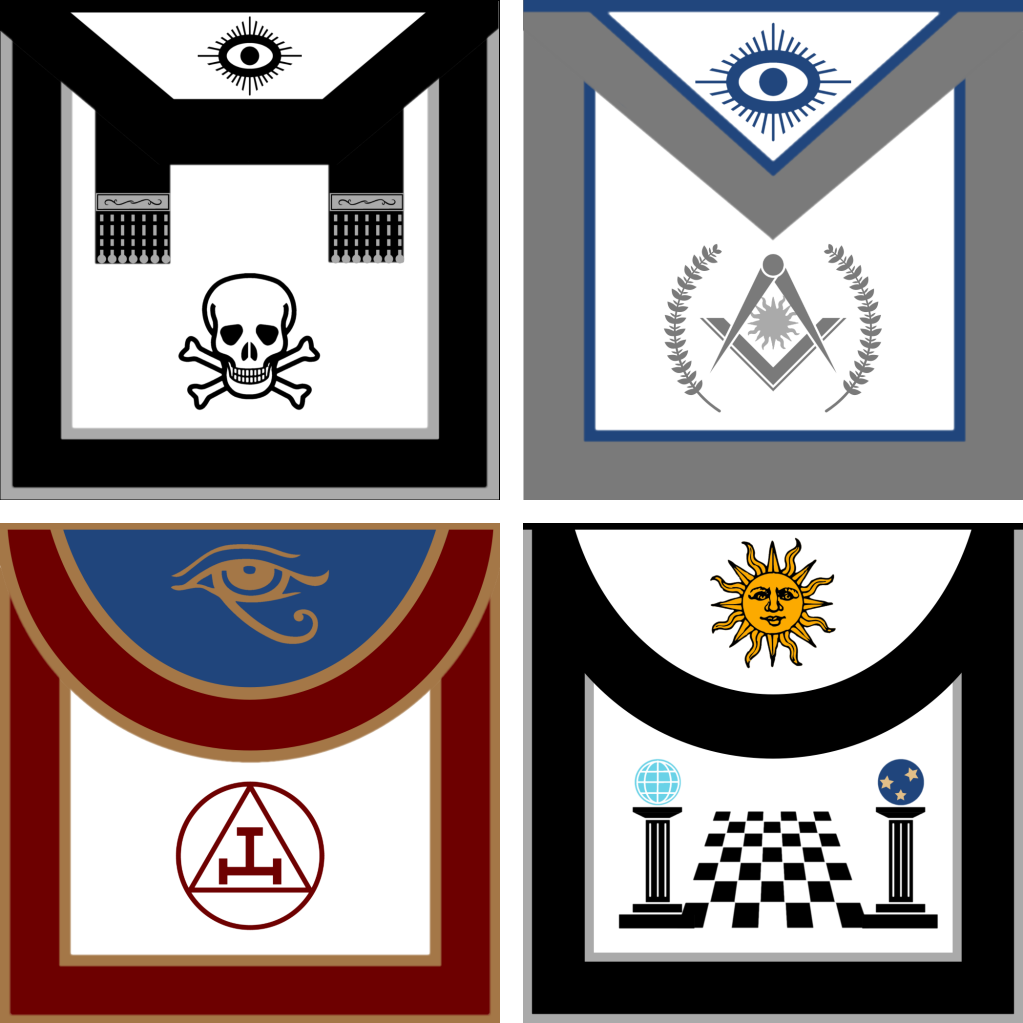


Each NFT includes the JPEG image plus a full size masonic apron and shipping worldwide
